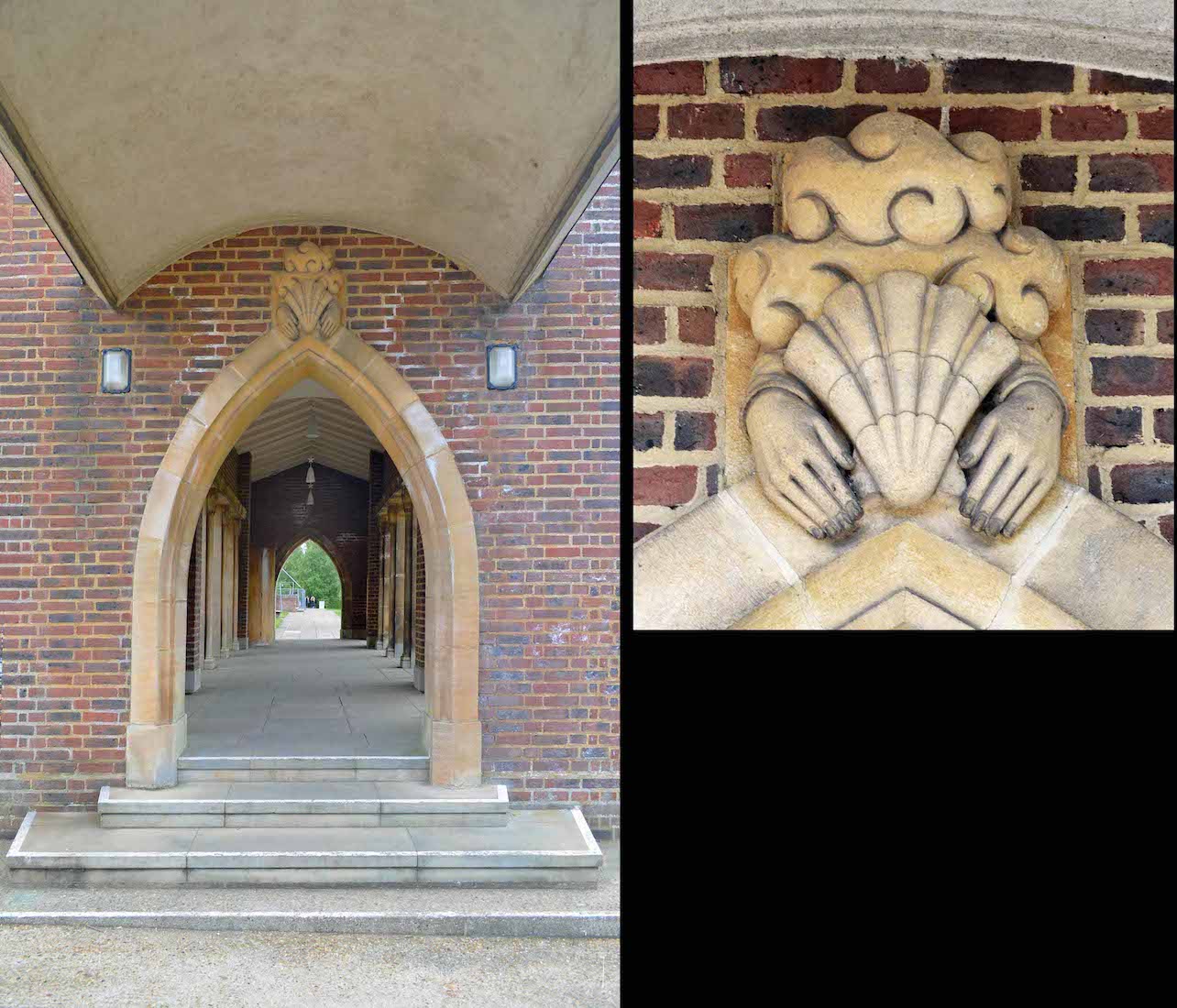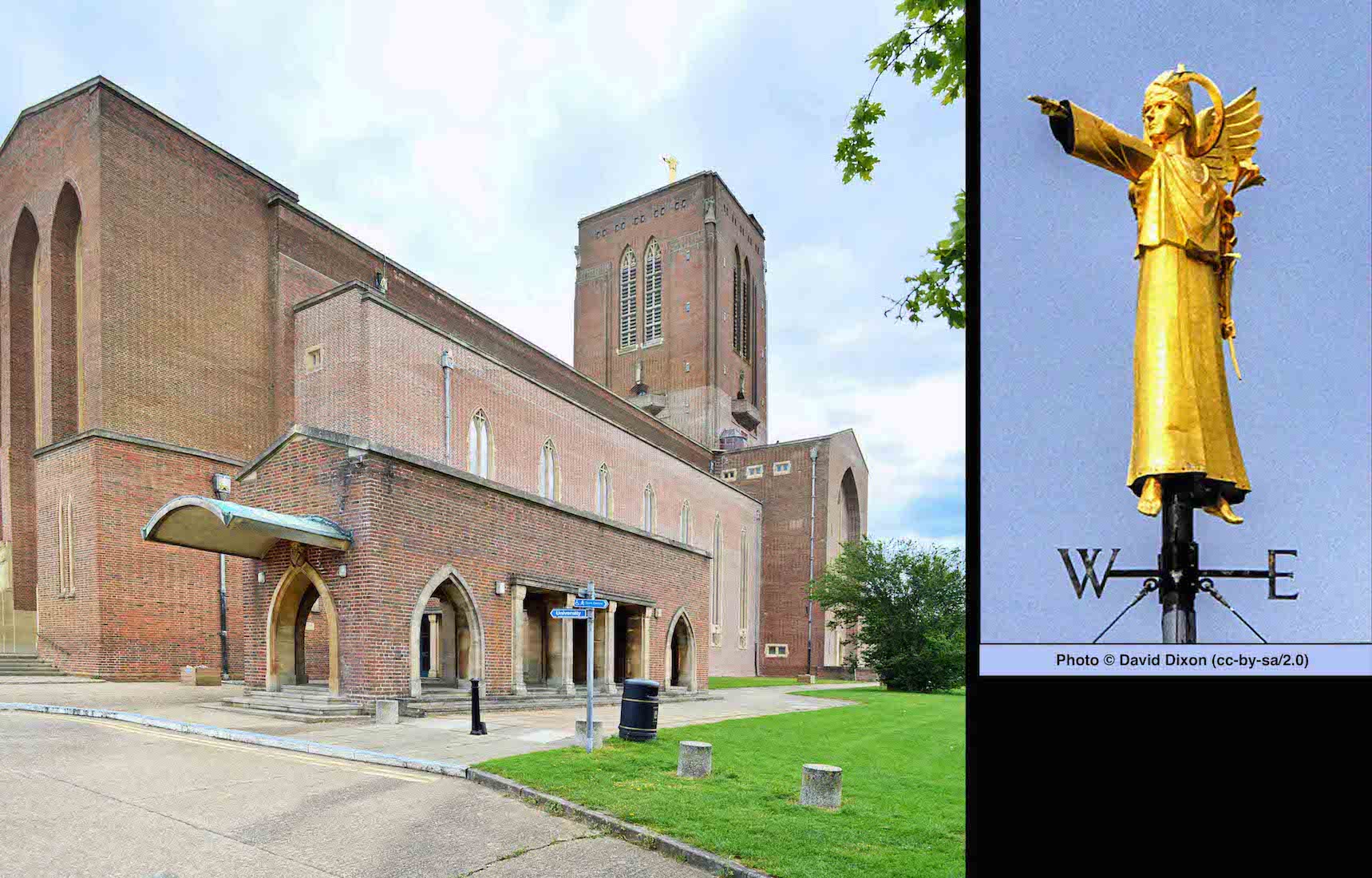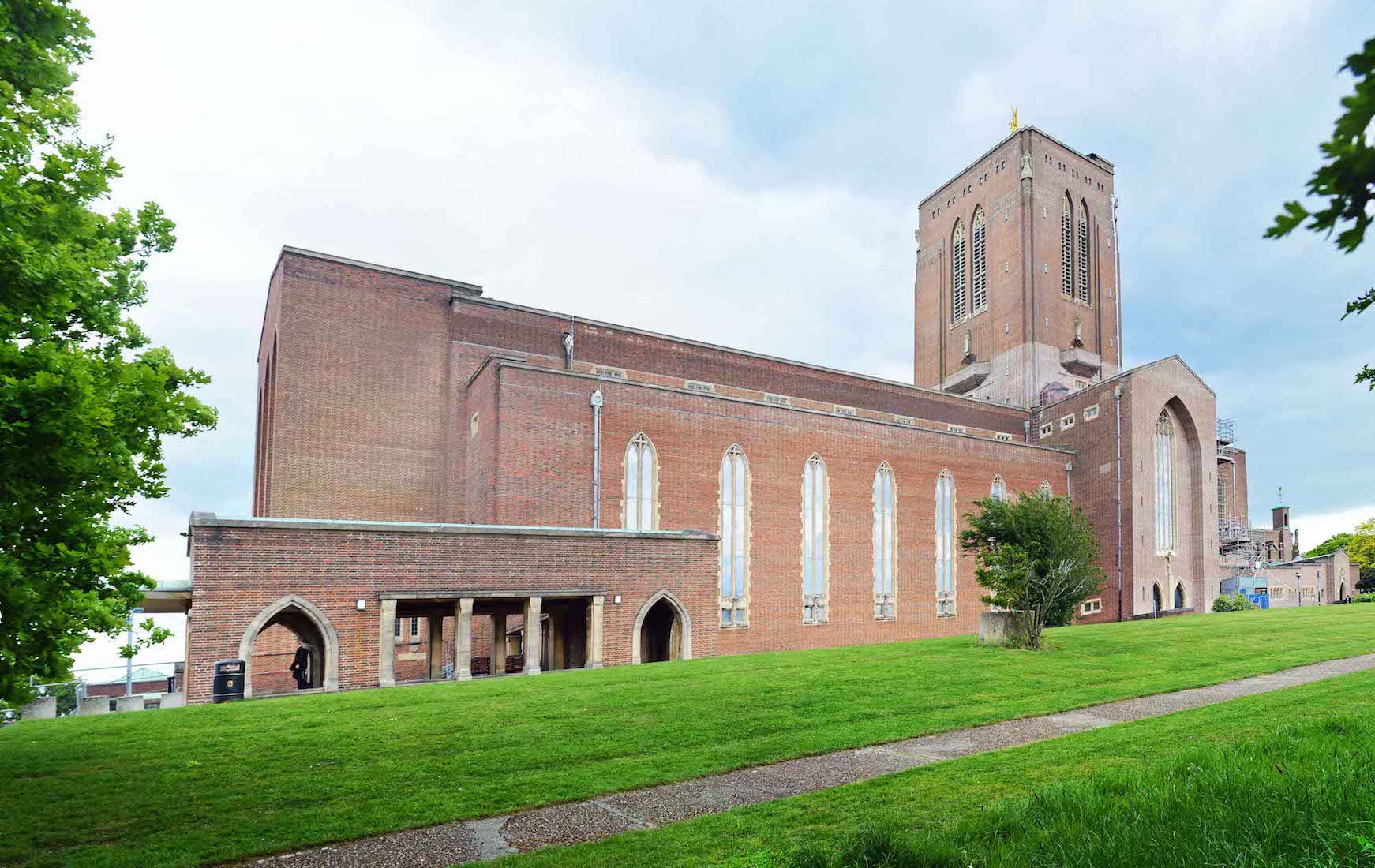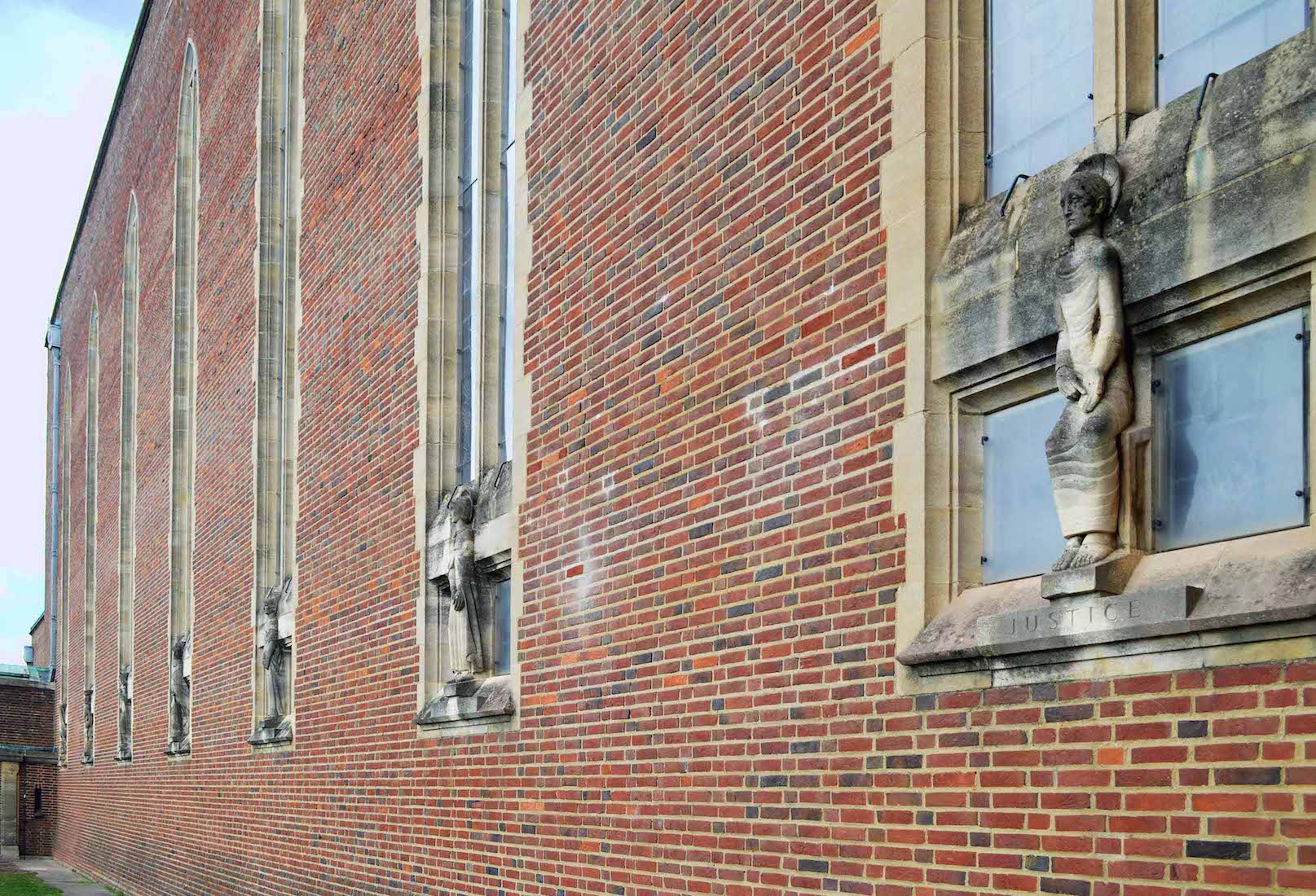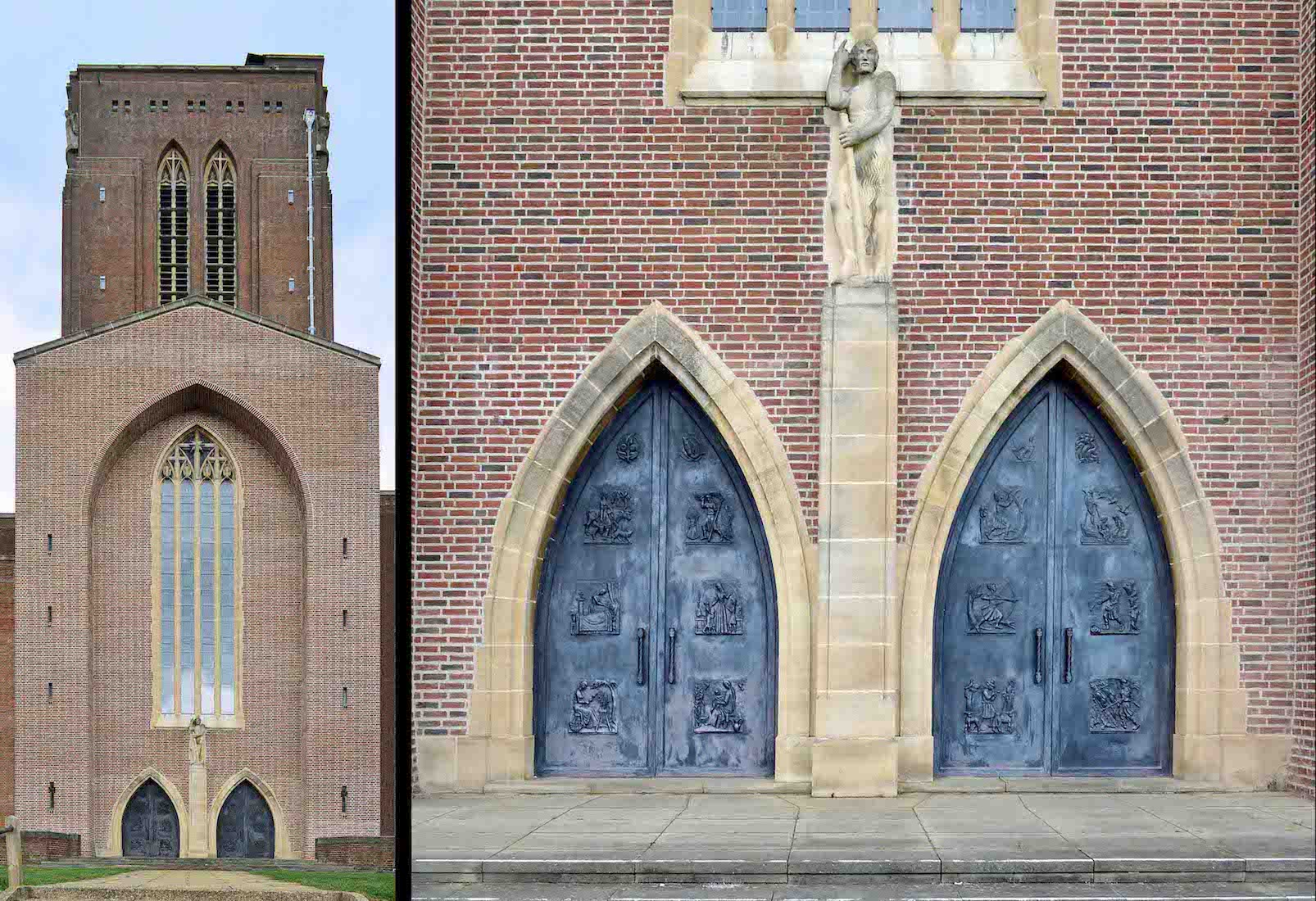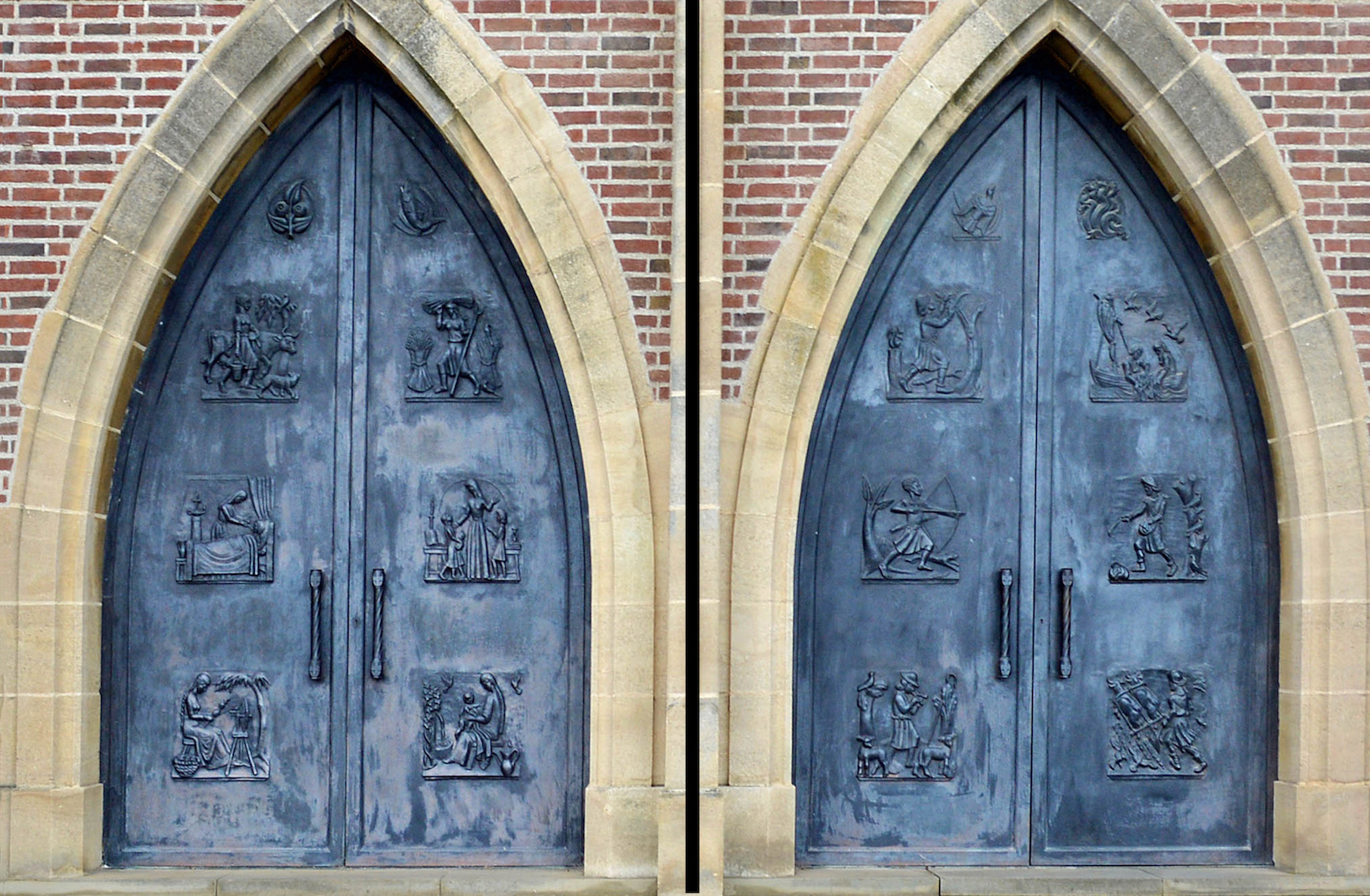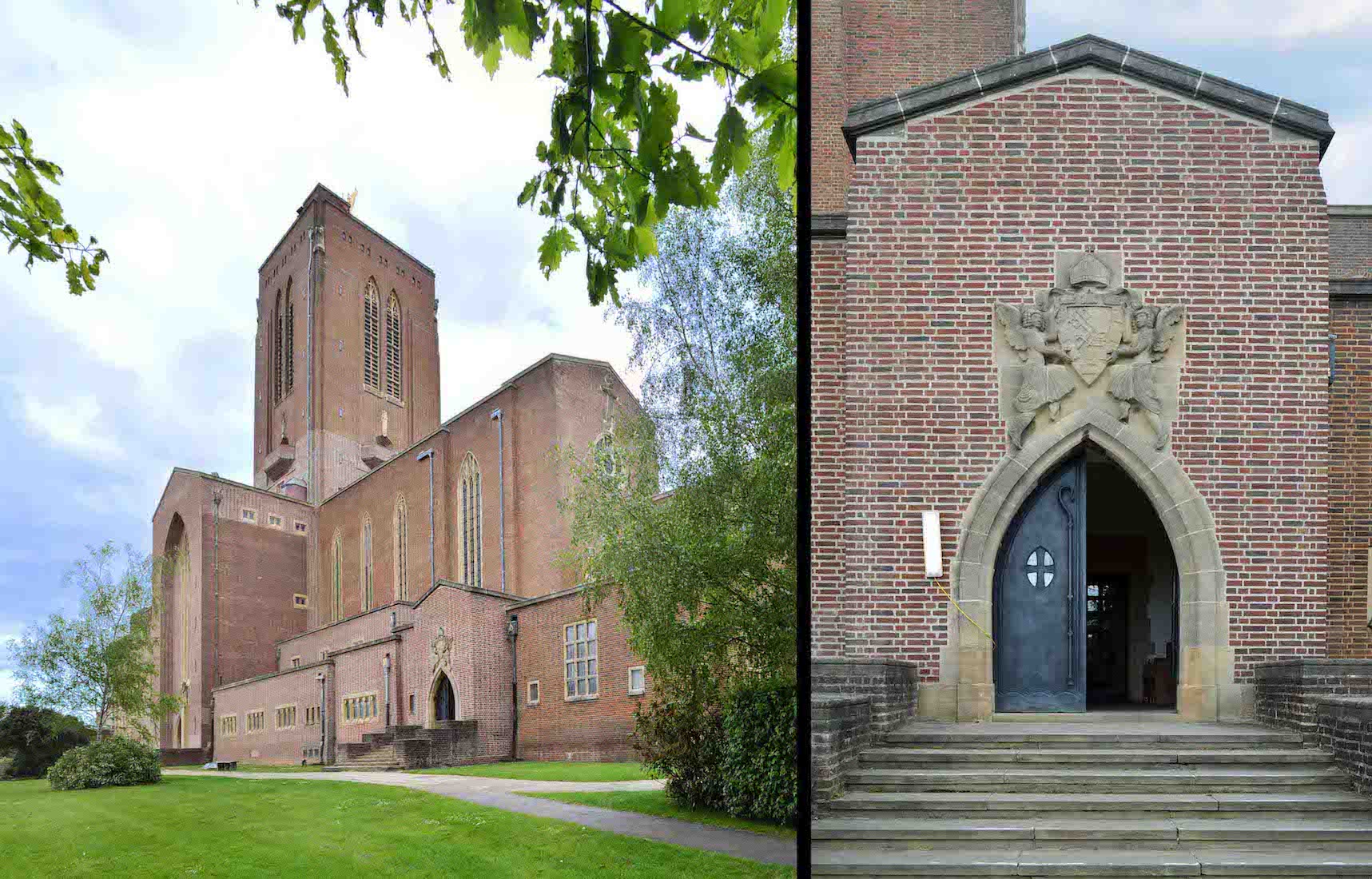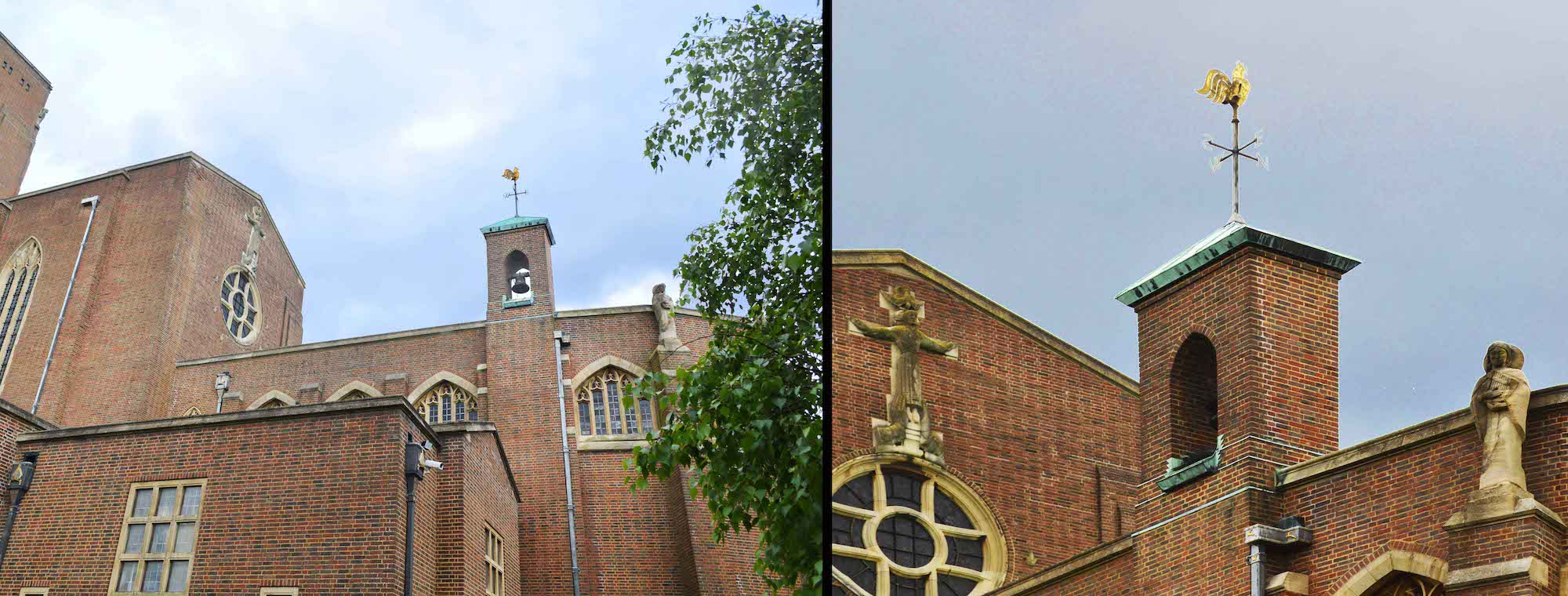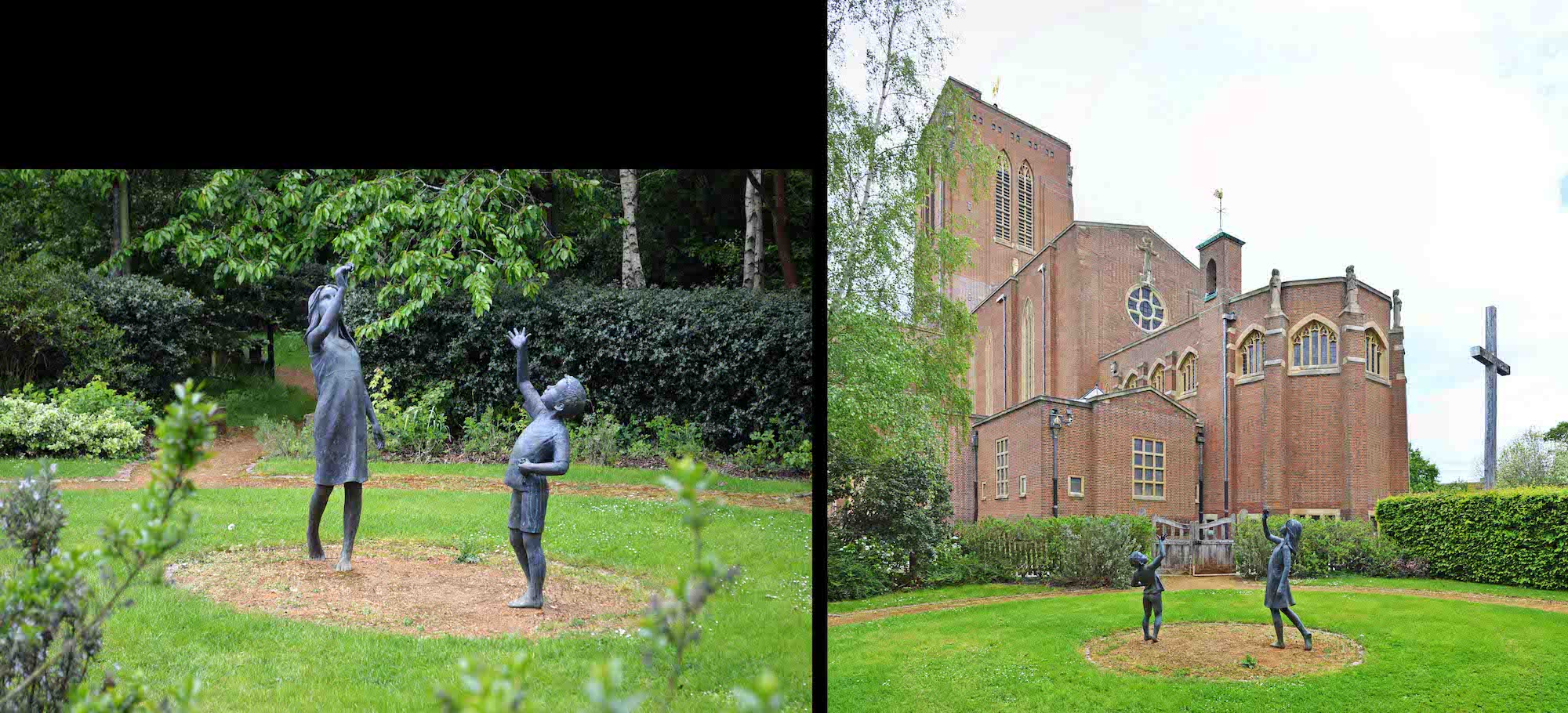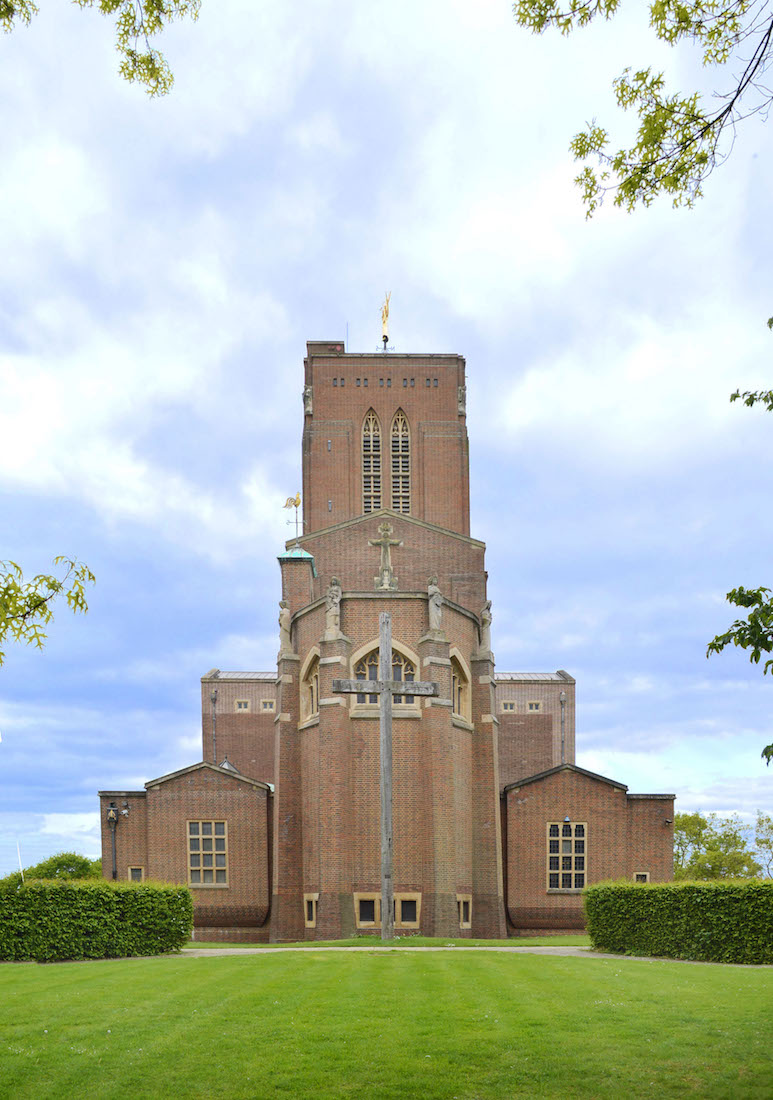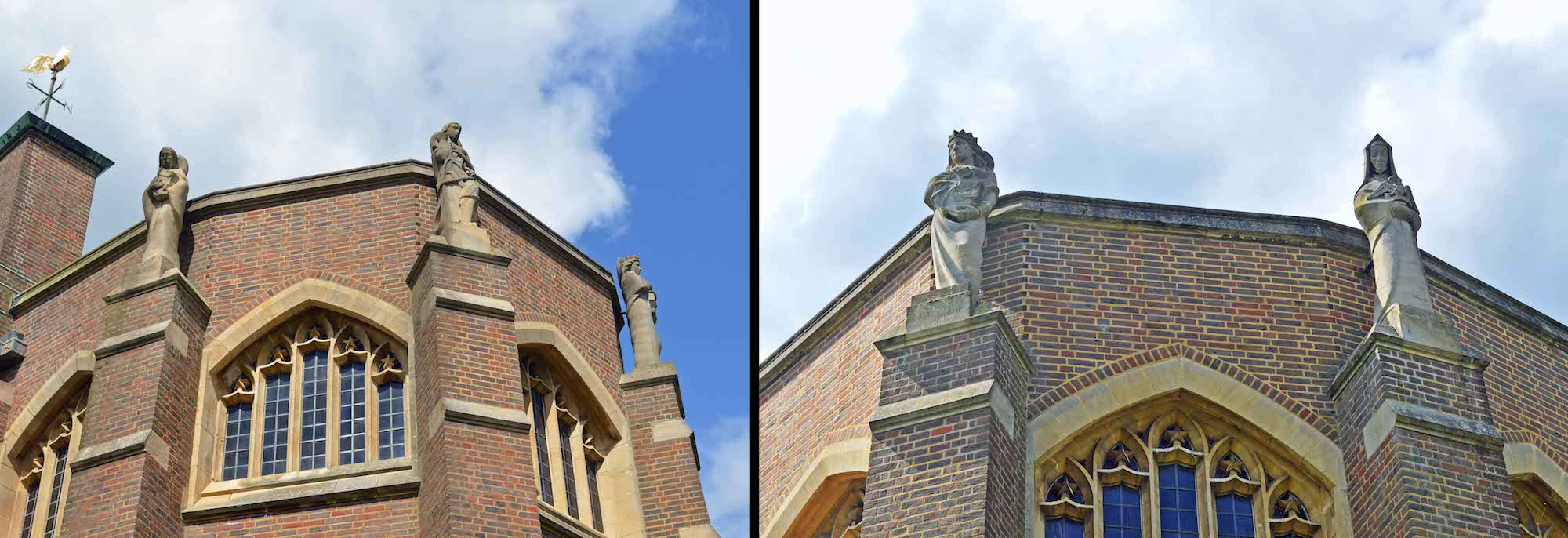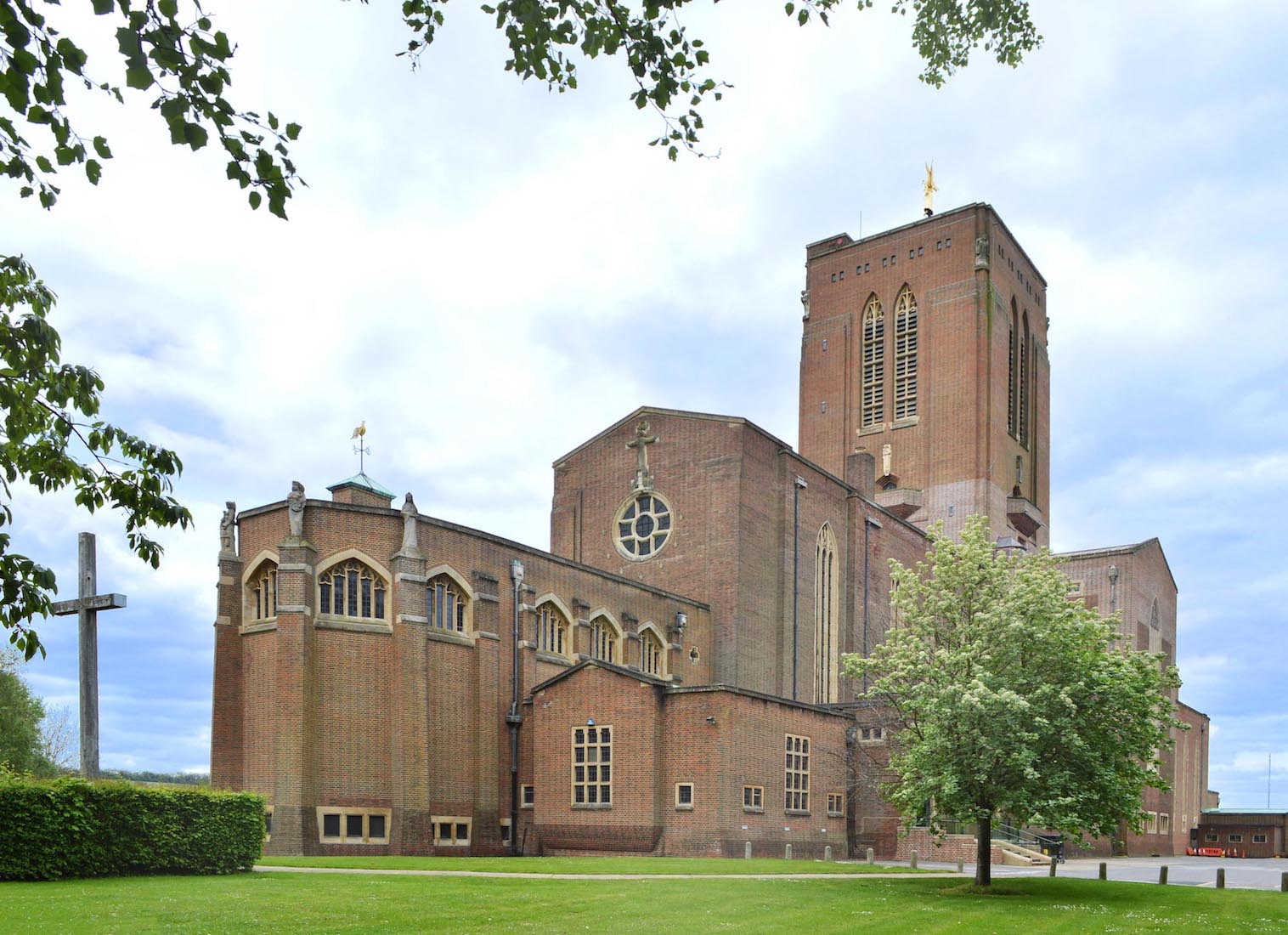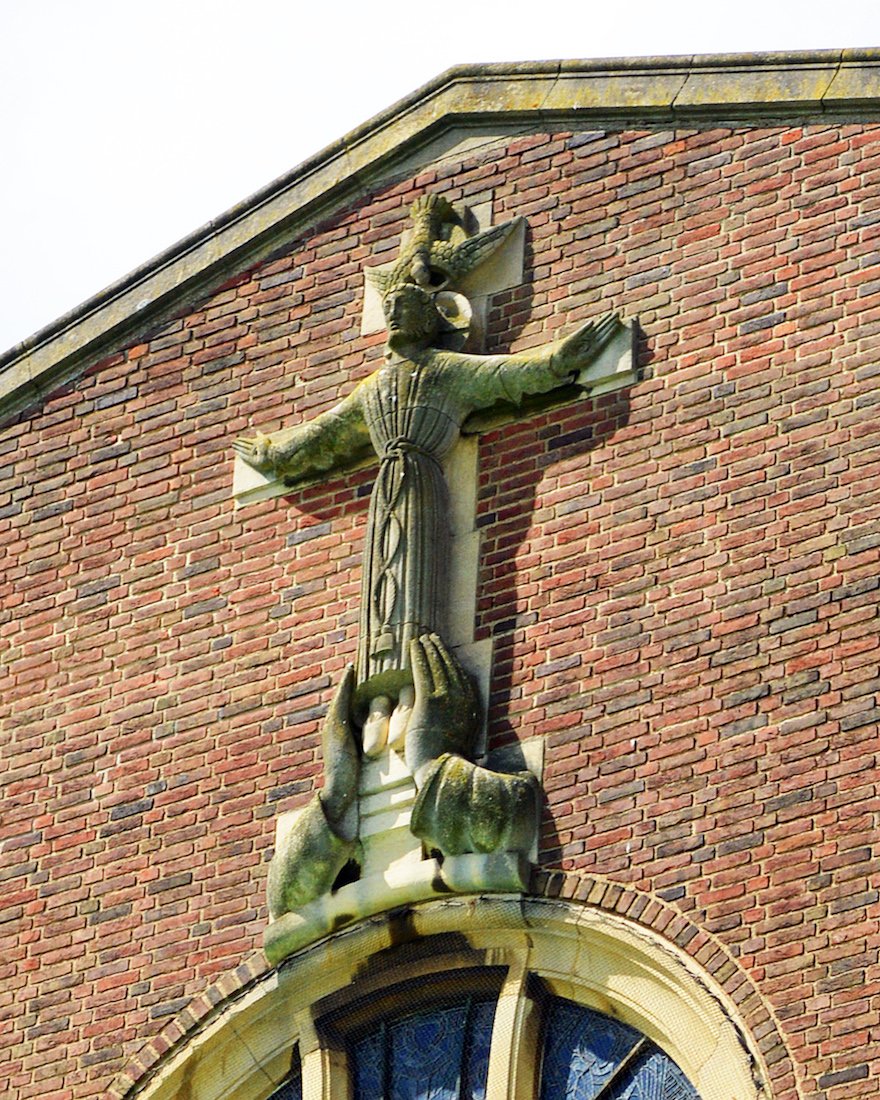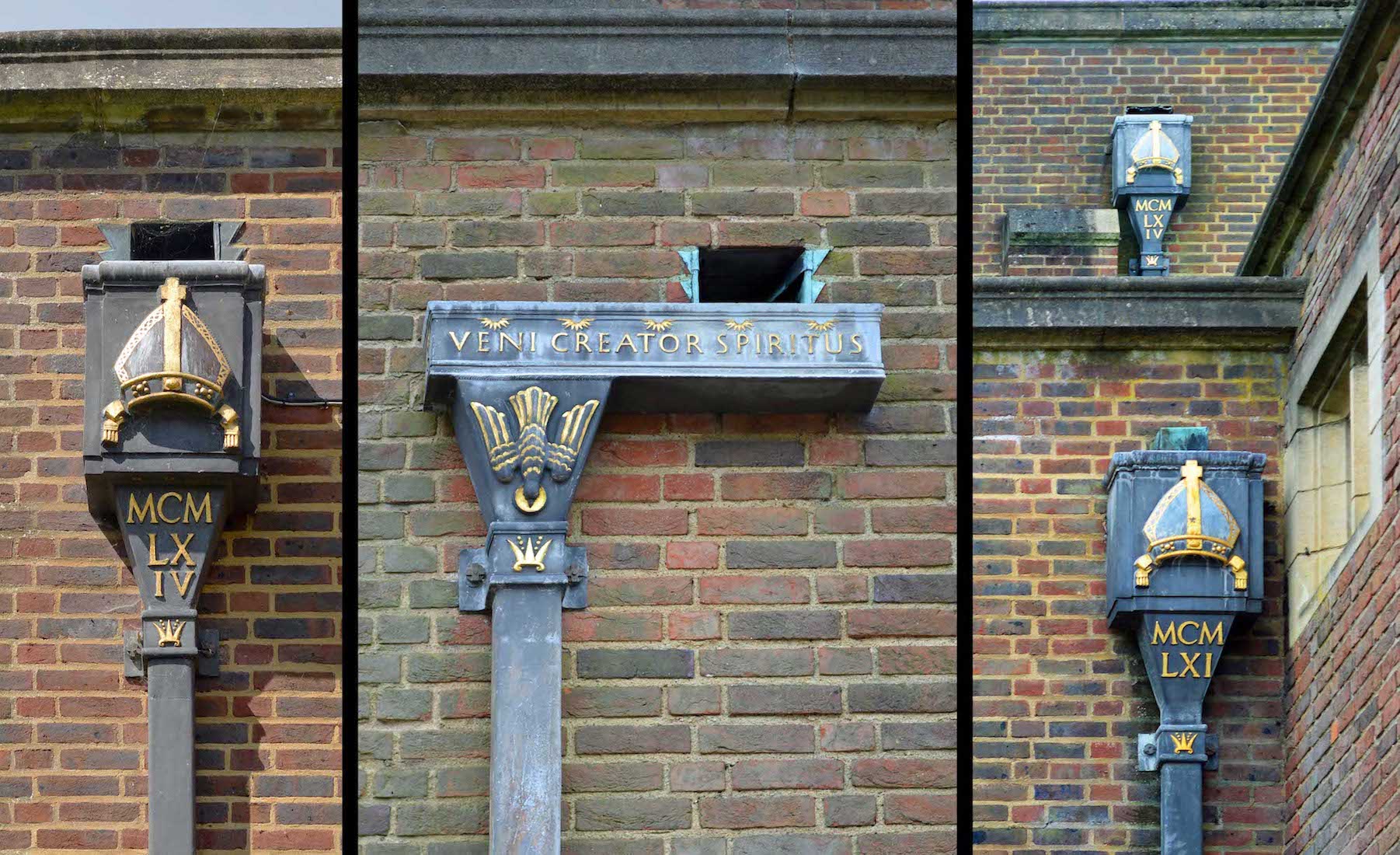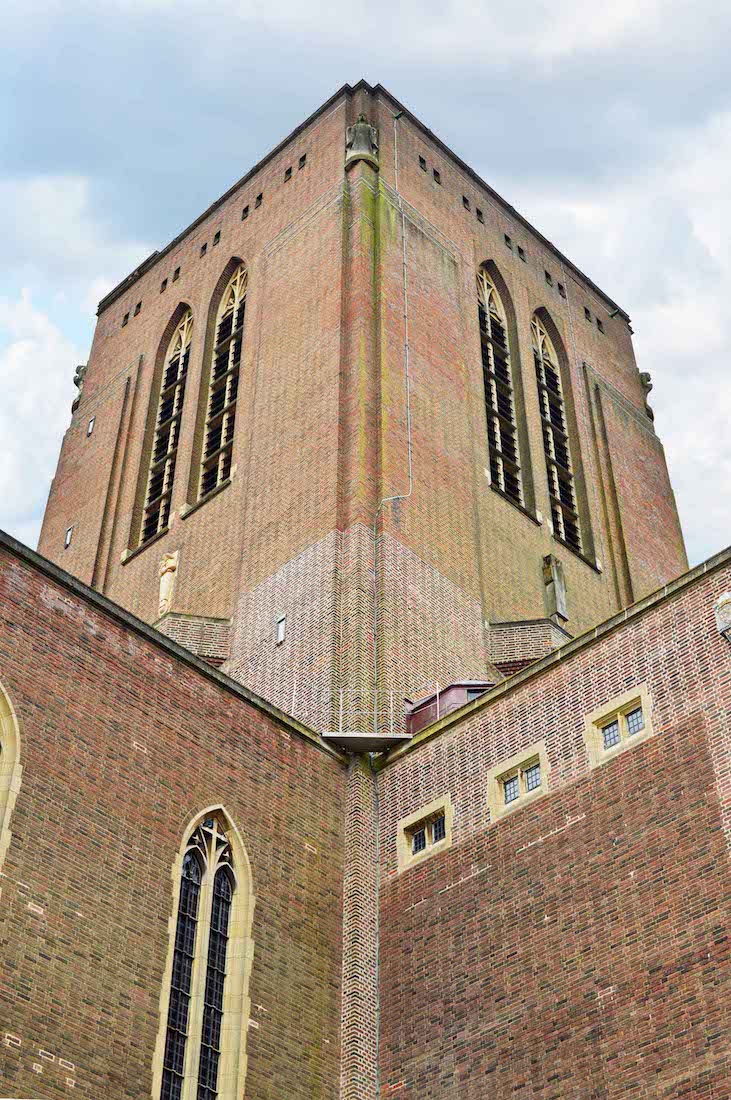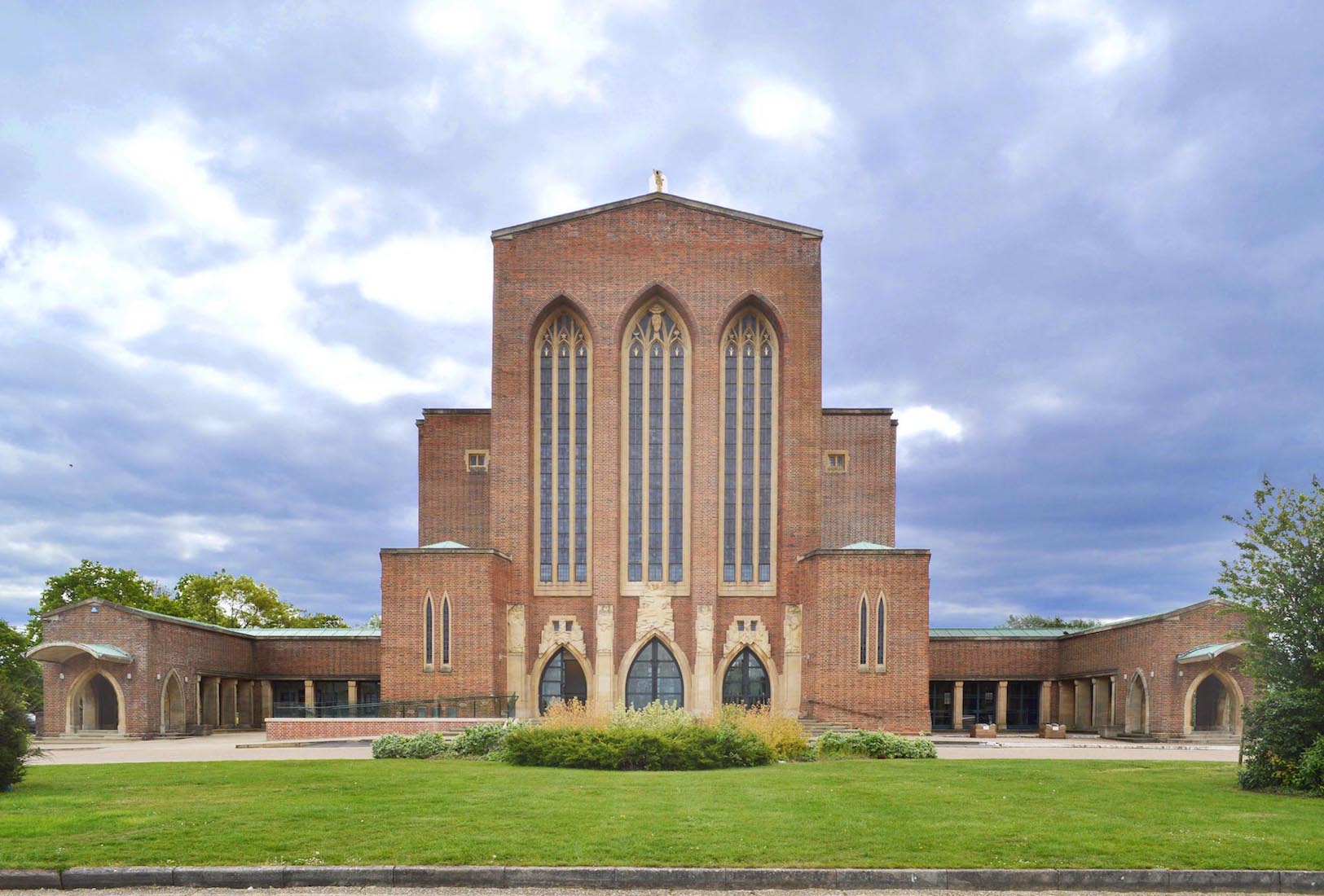
The Cathedral Church of the Holy Spirit, Guildford, commonly known as Guildford Cathedral, is the Anglican cathedral at Guildford, Surrey, England. Richard Onslow donated the first six acres of land on which the Cathedral stands, with Viscount Bennett, a former Prime Minister of Canada, purchasing the remaining land and donating it to the cathedral in 1947. Look carefully at the top of the central window to see the carving ‘The Hand of God’ by sculptor Alan Collins. The hand is surmounted by the sun, moon and stars - an invitation from God to be part of the Christian Community. It is but one of many interesting carvings to be found here. PLAN
2. SOUTHWEST VIEW
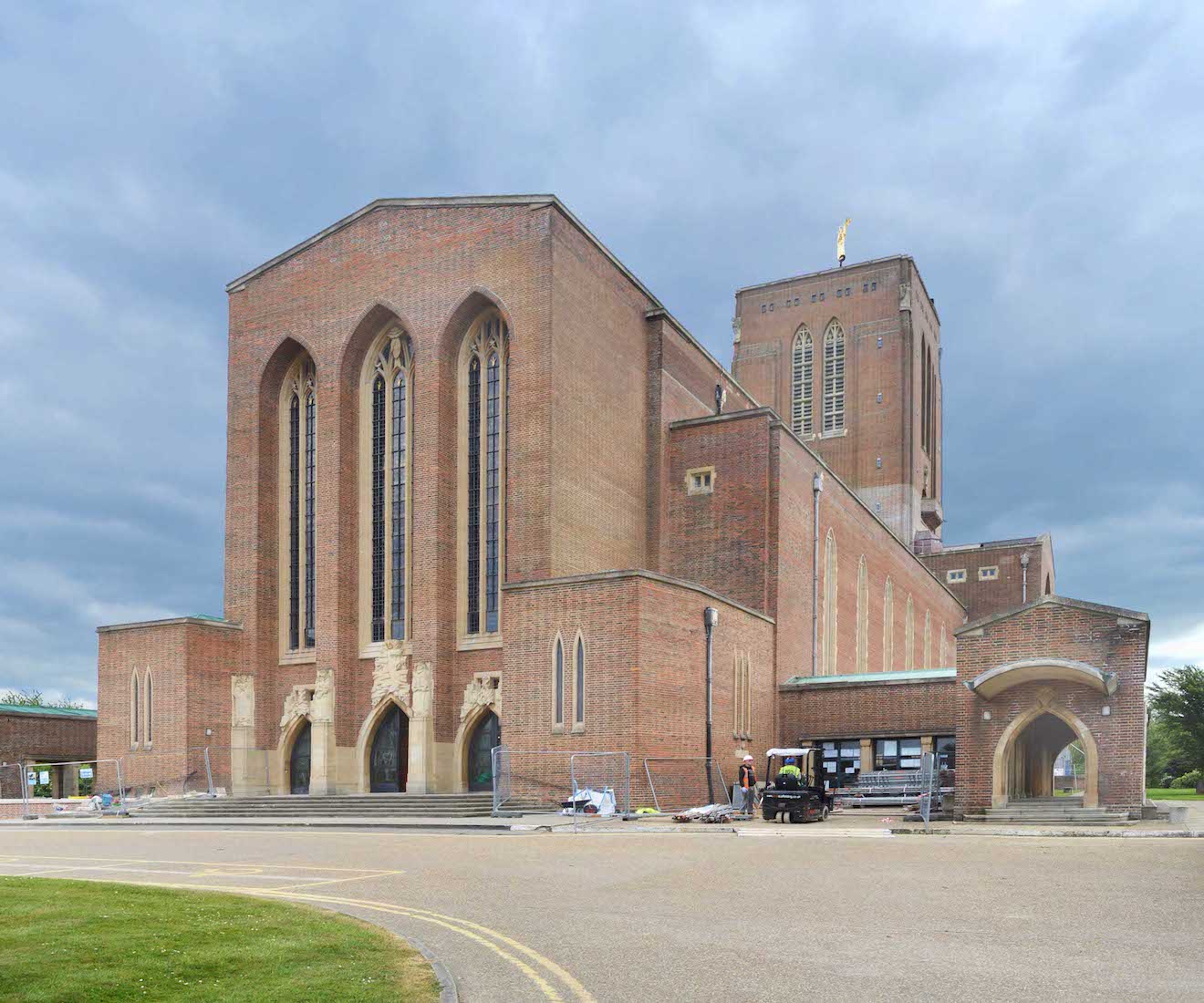
We begin our tour of Guildford Cathedral at the West end, walking around it in an anticlockwise direction. ••• The Diocese of Guildford was created in 1927, covering most of Surrey. Work began nine years later on its cathedral. The Cathedral Committee chose Edward Maufe (later Sir Edward Maufe) as its architect and the foundation stone was laid by Cosmo Lang, Archbishop of Canterbury, in 1936.
3. SOUTHWEST ARCH
At the West end of the Cathedral, on either side there is a small enclosing extension, known somewhat euphemistically as the North and South Garth. Above the South Garth arch is a carving by Allan Collins which shows a scallop shell held by two hands, symbolizing the Paten with Communion bread. The scallop shell was traditionally a sign that a pilgrim had visited the shrine of St James at Compostella in Northwest Spain where scallop shells were abundant on the beaches.
4. MEMORIAL STONE
Within the South Garth is a memorial stone with text which reads: ‘The six acres of land on which this Cathedral was built were given by Richard, the Fifth Earl of Onslow.’ ••• Construction of the Cathedral was intended to span many years to allow necessary funds to be raised, but building work had to be suspended during the Second World War. In the meantime Guildford’s restored Georgian Holy Trinity Church served as pro-cathedral.
5. SOUTH WALL
Continuing our circuit we proceed around the South side. We can just see, sitting atop the tower, the Gilded Angel weather vane, made of copper and gilded with gold leaf. Although the 15 foot tall sculpture weighs about one ton, the angel is able to move with the wind because it is mounted on ball bearings. It was designed by Alan Collins.
6. A MORE DISTANT VIEW
We stand back for a more distant view. Simon Jenkins describes his impression of ‘millions of bricks, among cliffs of interminable, relentless brickwork’! On the other hand, the Cathedral does stand in a pleasant open park setting, and we will find aspects to admire. ••• In 1952 Walter Boulton, who had ministered mostly in India, was made provost (head priest at the pro-cathedral and pastor of the parish), and revitalised the fund-raising for the new cathedral.
7. WINDOW FIGURES
When we approach the South wall more closely, we find that there is a concrete figure adorning the base of each central column. ••• The building could not be consecrated until 17 May 1961. When it was completed sufficiently for public worship, another cleric was chosen as first Dean of Guildford by the bishop, after consultation with various benefactors and influential clergy within Anglicanism. Construction was completed in full in 1965.
8. DETAILS OF WINDOW FIGURES
There are seven window figures along this South nave wall,each bearing a name and corresponding to the seven Christian virtues. These were executed by Richard Browne, Alan Collins, and John Cobbett. From left these are: Charity (AC), (Hope (RB), Faith (JC), Courage (AC), Temperance (AC), Prudence (AC) and Justice (RB).
9. SOUTH TRANSEPT
We come to the South transept with the tower rising up behind. The two doors look particularly interesting, but above them is Eric Gill’s ‘St John the Baptist’. The tower houses the 12 Cathedral bells. The tenor (largest bell) weighs 30 cwt 1 qr 10 lbs and the bells are tuned to the key of D major. All the bells were cast at the Whitechapel Bell Foundry, who also supplied the frame and fittings. The 10 largest bells were opened in 1965 and they were augmented to 12 in 1976. The Cathedral has the only ring of 12 bells in the Diocese.
10. SOUTH TRANSEPT DOORS
The reliefs on the two bronze doors set under two arches here are the work of Vernon Hill and are depictions of various occupations, some of men, others of women. The men’s occupations are on the right side door - woodcutting, fishing, hunting, sowing, shepherding and ploughing. On the left side door we have the occupations accredited to women - milking, harvesting, nursing, teaching, spinning and motherhood.
11. ST URSULA PORCH
Continuing our circuit we come to the St Ursula Porch near the Southeast corner. We notice that above the South balcony of the tower there is the sculptor Dennis Huntley’s St Hubert which was carved by Huntley ‘in situ’. ••• The Cathedral stands in a commanding spot on Stag Hill — so named because the Kings of England used to hunt there — and its solid red brick outline is visible for miles around; it immediately overlooks the University of Surrey's Stag Hill Campus. The location was partly chosen because it stood apart from Guildford town, reflecting the cathedral’s status as mother church of the Diocese, not the town.
12. LOOKING UP
Looking up from here we notice several items of interest and particularly the golden weathercock atop a bell tower with a single bell. The bell and weathervane are part of the Lady Chapel and the bell was first rung in December 1947 on the occasion of the dedication of the Crypt Chapel.
13. ‘SEEDS OF HOPE’ GARDEN
Opened in 2008, the Seeds of Hope Children’s Garden near the West end of the Cathedral is a unique garden designed to help children and young people explore feelings of loss of all kinds with the support of their families, teachers, and carers. The loss may be as a result of many different things including death, divorce, adoption, separation, a change of school, because a best friend has moved away or a treasured possession has been lost.
14. EAST VIEW
At the East end we can stand well back from the Cathedral for this view. The large wooden cross is interesting. It was erected in 1933 to show the placing of the future Cathedral on Stag Hill. We shall discover more about this later ... .
15. APSE ANGELS
At the Eastern end of the cathedral are the buttresses of the Lady’s Chapel with statues of St Cecilia, St Martha of Bethany, St Catherine and Lady Margaret Beaufort. St Cecelia is the patron saint of music, and St Catherine is well known for her martyrdom tied to a wheel. St Martha is known by her association with Mary and Lazarus. Lady Margaret Beaufort (1441/3 – 1509) was the mother of King Henry VII and paternal grandmother of King Henry VIII of England. She was a key figure in the Wars of the Roses and an influential matriarch of the House of Tudor.
16. NORTHEAST VIEW
••• Writing in 1932, Maufe said: ‘The ideal has been to produce a design, definitely of our own time, yet in the line of the great English Cathedrals; to build anew on tradition, to rely on proportion, mass, volume and line rather than on elaboration and ornament.' Pevsner Architectural Guides described the building as ‘sweet-tempered, undramatic Curvilinear Gothic’ and the interior as ‘noble and subtle’.
17. CHRIST FIGURE
The large sculpture above the round window is to the design of Eric Gill and portrays the crucifixion, illustrating the text: ‘The eternal God is your refuge and underneath are the everlasting arms’. [To #84] Eric Gill died before he was able to carve this piece and the carving was done by Anthony Foster, Gill’s assistant. Foster died at the young age of 47 in 1957 and had taught stone-carving at Camberwell School of Art.
18. DRAINPIPES
As we walk around the cathedral we see many quite distinctive drainpipes. This was one of Edward Maufe’s wishes; he wanted even the mundane drainpipe to reflect ‘The Glory of God’. The drainpipes bear Roman numerals being the dates they were installed, and some bear the inscription ‘Veni, Creator, Spiritus’.
19. CENTRAL TOWER
The Cathedral tower is 156 feet (48 metres) high. Above the East balcony is a WWI Memorial depicting a mother and child, carved by sculptor Nicholas Thompson in situ in 2016. ••• In the 1950s a ‘buy a brick’ scheme was used to raise funds for construction, to great success. Each brick cost 2s 6d (roughly £6 in today's money) and entitled the buyer to sign their name on the brick. Before the war, the bricks themselves were made from the clay removed during the installation of 778 piles, driven 50 feet into the hill. They were made by the brickworks at the bottom of Stag Hill, on which the Cathedral stands. After the War, the brickworks ceased to trade, and bricks were then bought from a brickmaker in Beare Green, Sussex.
20. NORTH WALL
The North wall of the Cathedral bounds a large car park, and the features are much like those on the South side. In particular there is a set of figures placed in line with the central columns of the seven nave windows.


